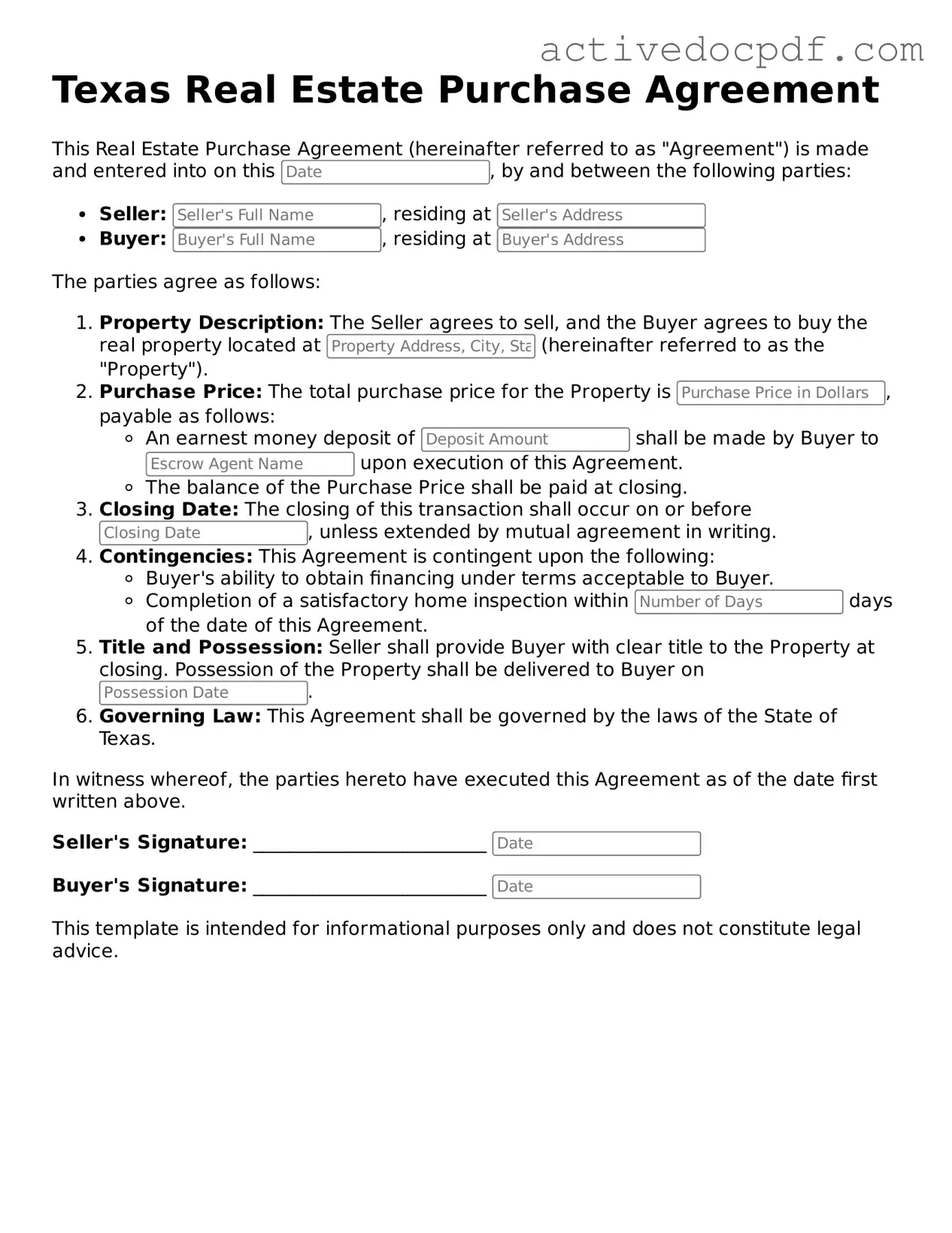The Texas Real Estate Purchase Agreement form is a legally binding document used to outline the terms and conditions of a real estate transaction in Texas. It serves as a contract between the buyer and seller, detailing the property being sold, the purchase price, and other important terms of the sale.
This form is primarily used by real estate agents, buyers, and sellers involved in residential property transactions in Texas. It ensures that all parties are on the same page regarding the sale and helps to protect their interests.
What key elements are included in the agreement?
The Texas Real Estate Purchase Agreement typically includes:
-
Property description
-
Purchase price
-
Financing details
-
Closing date
-
Contingencies (such as inspections or financing)
-
Earnest money deposit
-
Title and possession details
Is the agreement customizable?
Yes, the Texas Real Estate Purchase Agreement can be customized to meet the specific needs of the buyer and seller. Parties can add additional terms or conditions as long as both agree to them and they are compliant with Texas law.
What is earnest money, and why is it important?
Earnest money is a deposit made by the buyer to demonstrate their commitment to purchasing the property. It is typically held in escrow and applied to the purchase price at closing. This deposit is important because it shows the seller that the buyer is serious and helps to secure the property while the transaction is finalized.
What are contingencies, and how do they work?
Contingencies are conditions that must be met for the sale to proceed. Common contingencies include financing, home inspections, and appraisal requirements. If a contingency is not met, the buyer may have the right to withdraw from the agreement without losing their earnest money.
Can a buyer back out of the agreement?
Yes, a buyer can back out of the agreement under certain circumstances, particularly if there are contingencies that have not been satisfied. However, if the buyer withdraws for reasons not covered by contingencies, they may forfeit their earnest money.
How is the closing process handled?
The closing process involves finalizing the sale of the property. This typically includes the signing of documents, payment of closing costs, and transfer of ownership. A title company or real estate attorney usually facilitates this process to ensure that all legal requirements are met.
What happens if there is a dispute over the agreement?
If a dispute arises, the parties may attempt to resolve it through negotiation or mediation. If these methods fail, legal action may be necessary. It is advisable for parties to consult with a legal professional to understand their rights and options.
The Texas Real Estate Purchase Agreement form can be obtained through various sources, including real estate agents, brokers, or online legal document providers. It is important to ensure that the form is up-to-date and compliant with Texas laws.
